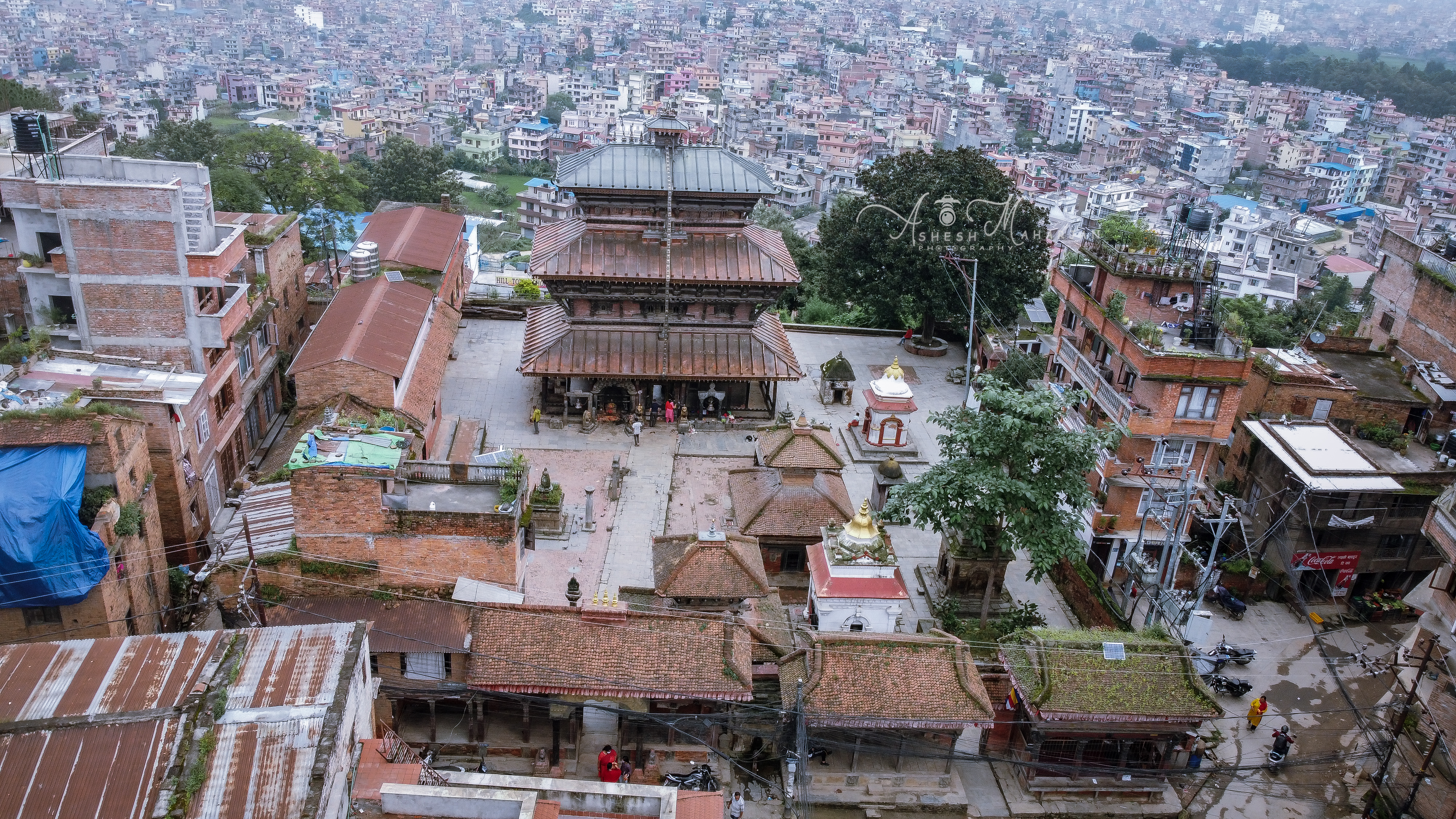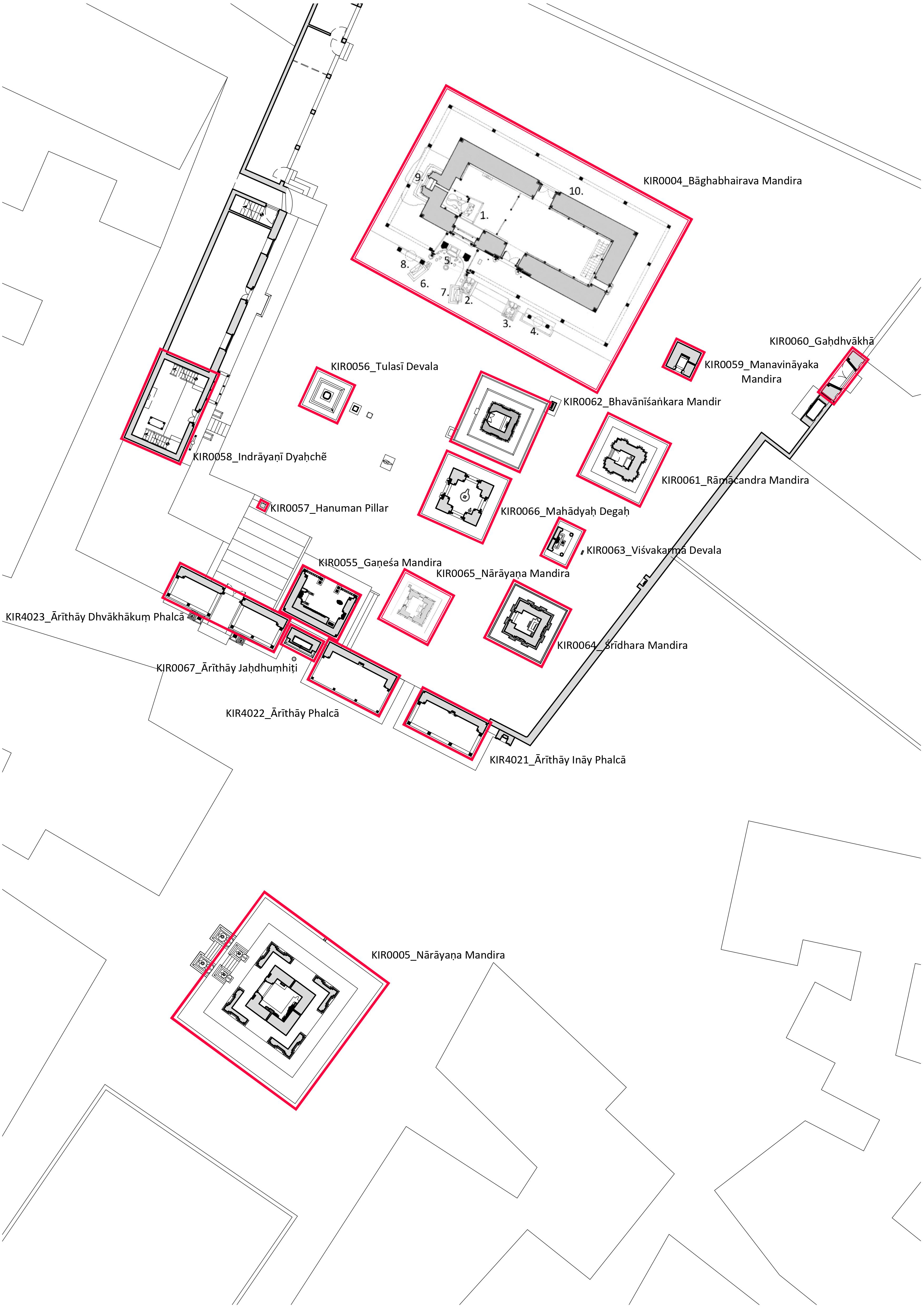Bāghabhairava Complex, Kirtipur

The Bāghabhairava complex is the religious and cultural centre of Kirtipur. Situated at the centre of the city, the Bāghabhairava complex is locally known as Ājuthāy (lit. at the deity’s place). Bāghabhairava is the oldest and the largest temple in Kirtipur. The residents of Kirtipur worship Bāgabhairava as their favourite deity (arādhyadeva) and call him Dhũ-āju (the deity in the form of a tiger). The Bāghabhairava temple area is also known as Gũde but is vernacularly referred to as Gunay. Thus, in an inscription from 1587 CE (NS 707), Bāghavairava is called Gundesthānādhipati (lit. the lord of the place called Gunde). There is no documented evidence to date the initial construction of the Bāghabhairava Mandira. The earliest inscription related to this temple was issued in 1514 CE (635 NS), recording its renovation by Jagatpāla, a powerful local functionary (mahāpātra) of Patan. This is one of the temples in the Kathmandu Valley which survived in its original architectural style (Tivari 1994, p. 130).
The statues dating back to the 3rd century at the complex are the oldest statues of Kirtipur (Bangdel 1982, p. 125-133). Besides these statues, there is a statue each of Umāmaheśvara and Śiva belonging to the 4th century (Bangdel 1982, 183-191). Referring to Gunde, the Gopālarājavaṃśāvalī (fol. 38b) mentions that Kīrtipāla Bhāro (text: Kitapāla Bhāro) was incarcerated in 1242 CE (NS 362) after Gundekvāṭha and Gochekvāṭha opened. This suggests that the Bāghabhairava complex had already been developed as a fort then.
Indrāyaṇī Dyaḥchẽ is another important monument of the Bāghabhairava complex. Every year, the statue of Indrāyaṇi is taken around the city on a palanquin on the 10th of the bright fortnight of Mārgaśīrṣa. The procession comes to an end here at the complex. Various other socio-cultural activities take place at the Bāghabhairava complex throughout the year. The annual procession of Bāghabhairava takes place on the 1st solar day of Bhādra. The procession includes various other activities like the Lākhe Dance which keeps the complex occupied by scores of people all through the night.

Links to individual monuments
KIR0005_Nārāyaṇa Mandira
KIR0059_Manavināyaka Mandira KIR0060_Gaḥdhvākhā
KIR0061_Rāmācandra Mandira
KIR0062_Bhavānīśaṅkara Mandir
KIR0063_Viśvakarmā Devala
KIR0064_ Śrīdhara Mandira
KIR0065_Nārāyaṇa Mandira
KIR0066_Mahādyaḥ Degaḥ
KIR0067_Ārīthāy Jaḥdhuṃhiṭi
KIR0055_Gaṇeśa Mandira
KIR0056_Tulasī Devala
KIR0057_Hanuman Pillar
KIR0058_Indrāyaṇī Dyaḥchẽ
KIR4021_Ārīthāy Ināy Phalcā
KIR4022_Ārīthāy Phalcā
KIR4023_Ārīthāy Dhvākhākuṃ Phalcā
